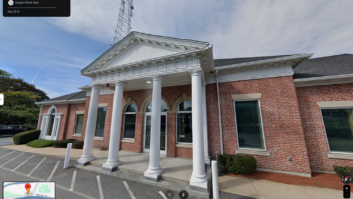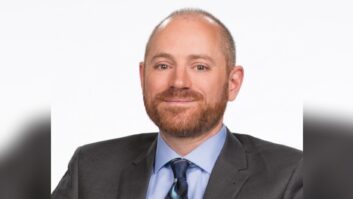AM radio continues to struggle for vitality and survival. The ongoing Federal Communications Commission AM Revitalization proceeding has opened up a number of new opportunities for AM owners and operators to save and improve their stations.
One fine example of this is KARR(AM), 1460 kHz in Kirkland, Wash., a Seattle suburb on Lake Washington. He described it in a presentation at the spring NAB Broadcast Engineering Conference.


Two views of the former KARR/KKDZ site, in 2014 and 2016.
The station was licensed in 1965 as a daytimer and at the time our story begins was owned by Family Radio. It had been operating since 1986 as a 5/2.5 kW DA-2 facility with six towers on a seven-acre leased site. It was shared and diplexed with KKDZ(AM), 1050 kHz 5 kW DA-N, a Disney Channel station.
As has happened with many AM transmitter sites in populous areas, the land became much more valuable than the leases or even the stations themselves. In 2012, the landowner gave notice to both station owners that their leases would not be renewed and the site would be developed into high-end single-family residences.
KARR(AM) fell silent in February 2014. KKDZ vacated the site and consolidated operations to a non-directional day site in west Seattle, which required reducing night power significantly. Family Radio had been marketing the station and looking for a buyer that would hopefully be able to find a new site and relocate the station.
With no other offers forthcoming, Family agreed to sell the station to Jim Dalke, CPBE CBNT 8-VSB AMD and the CEO of Dalke Broadcast Services, if he could get on the air under a special temporary authorization before the one-year silent period would automatically cancel the station license.

Another AM case study described by Jim Dalke was that of KNTB and its FM translator K221FJ. Dalke prepared an STA plan to operate with 100 watts into a temporary antenna at a private residence in the Kirkland area. He found a Broadcast Electronics AM 1A transmitter to drive a “long-wire” slant antenna hung from a nearby fir tree. Dalke then transmitted programming provided by Family Radio from their IP stream long enough to satisfy the FCC rules to keep the license alive until a permanent site could be found.
Dalke acquired the KARR license from Family a few months later. When he attempted to renew the STA, the commission suggested a more robust facility that did not have the antenna suspended from a tree in a residential area.
Dalke then engaged his friend Warren McPherson, owner of Vetco Electronics in Bellevue, Wash., a favorite area parts house for hams and broadcasters. At Vetco he not only could rent office space for a studio but could also erect a roof-mounted pole to serve as a better antenna. That was acceptable to the commission as a means to buy more time until a suitable site for perhaps a two-tower DA and increased power can be obtained.
GROWTH AND CHANGE
Over the course of the 51 years since KARR was licensed, the city of Kirkland grew in size from a population of 8,000 people in land area of two square miles to 85,000 residents in 18 square miles.
Dalke was able to take advantage of the newly relaxed city of license minimum allowable coverage rules, as well as elimination of the “ratchet rule” and the specified minimum radiation efficiency antenna rule, to get his STA and a more reasonable chance of finding an appropriate permanent antenna location.
Currently, Dalke is also looking to obtain an FM translator to pair up with KARR, which will open up even more revitalization opportunities. He is also considering a number of format options including unique local news, weather and traffic reports and community events coverage that other local media do not provide.
Dalke described the project in a presentation at the spring NAB Show.
Another similar example of a real-life AM station survival story that Dalke cited is KNTB(AM), 1480 kHz in nearby Lakewood, Wash.
KNTB was a 1 kW two-tower DA-2 facility that lost its leased tower site. The nearby residential neighborhood grew and expanded around the site. Again, new houses became more valuable than the tower lease. The owners of KNTB were able to obtain a downtown rooftop location and an STA for 250 watts into a temporary long-wire antenna. They were also fortunate to have been able to obtain an FM translator license — K221FJ on 92.1 MHz with 150 watts — that serves their city of license quite well.
Tom McGinley is Radio World technical advisor.
Got a revitalization story to share? Email [email protected].












